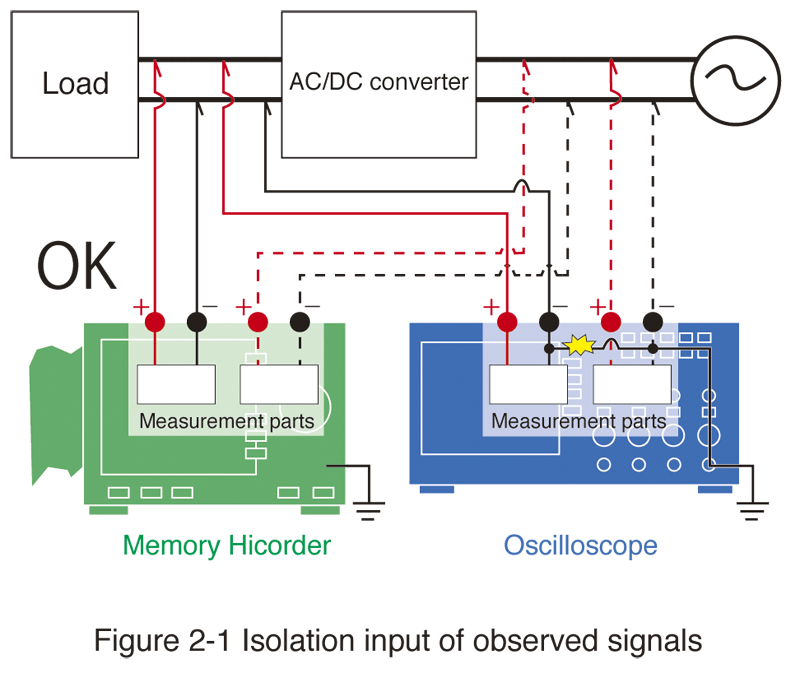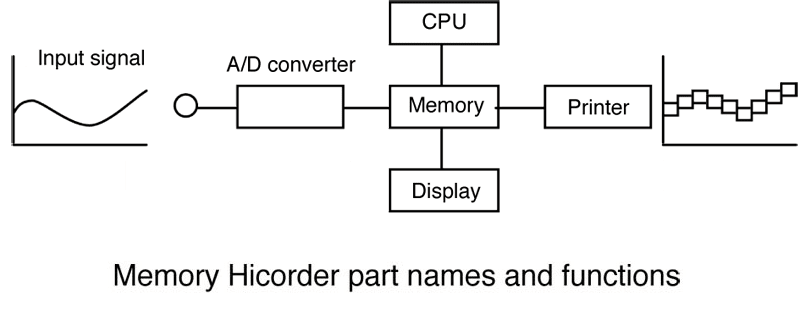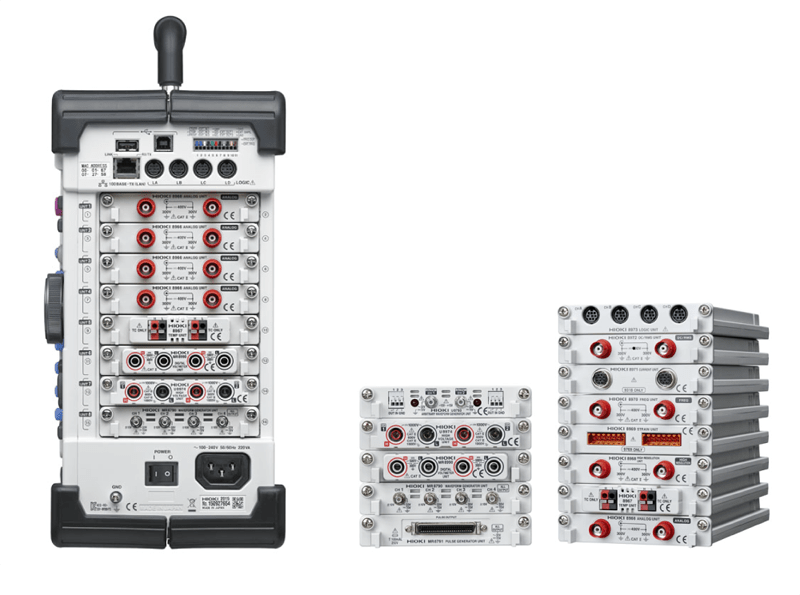What is the Difference Between a Digital Oscilloscope and a Memory HiCorder?
No need for isolation amplifiers
The biggest difference between Memory HiCorders and digital oscilloscopes lies in isolation of input channels from one another and from the instrument.
A Memory HiCorder’s input channels are all electrically isolated. In a digital oscilloscope or A/D board, one side of each input channel is connected to the ground.
Digital oscilloscopes are well suited to use in applications where it is necessary to observe multiple signals that share the same ground, for example in measuring the electrical signals on a circuit board. However, if it were used to simultaneously measure the input and output sides of a power conversion device (such as a converter or inverter) like that shown in Figure 2-1, a digital oscilloscope would experience an internal short-circuit.
Memory HiCorders are extremely useful in applications such as this where a large number of signals at different potentials must be measured.
The only way to use a digital oscilloscope in such applications is to place an isolation amplifier between each signal and the instrument.
Difference of resolution and accuracy
Most digital oscilloscopes have a resolution of 8 bits (yielding 256 points). For example, if using a ±10 V range, that means the smallest interval that can be detected by the instrument is 0.078 V (obtained by dividing the full span of 20 V by 256 points).
Most Memory HiCorders have a resolution of 12 bits (yielding 4,096 points), enabling them to read values at an interval of 0.0048 V under the same conditions. A Memory HiCorder with a resolution of 24 bits would be able to read values at an interval of 0.000001192 V.
Memory HiCorders also offer superior accuracy. Whereas a typical digital oscilloscope provides accuracy of ±1% f.s. to ±3% f.s., Memory HiCorders deliver accuracy of ±0.01% rdg. and ±0.0025% f.s. to ±0.5% f.s.
This level of resolution and accuracy makes it possible to observe output from mechanical displacement, vibration, and other sensor types at a higher level of detail.
More channels and support for a larger variety of signals
Whereas typical digital oscilloscopes have 4 input channels, Memory HiCorders can accommodate from 2 to 54 channels of input, depending on the model.
In addition, different input units can be used, enabling Memory HiCorders to accept a larger variety of signals.
Available input units include analog units that can accept 1000 V DC (600 V AC) voltage input; units that can be connected to thermocouples, strain gauges, and acceleration pickups; and units that can be connected to high-precision current sensors.
Other units go beyond signal input to enable signal output with function generator and arbitrary waveform generation functionality.
Memory HiCorders shine in the field of mechatronics, where they deliver functionality that lies beyond the capabilities of digital oscilloscopes, for example in mixed recording of voltage and current waveforms and control signals for motors, inverters, and converters and in recording gasoline engine strain and ignition waveforms.



